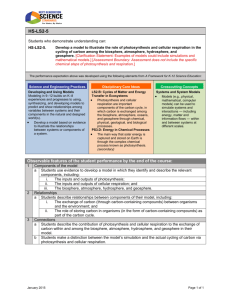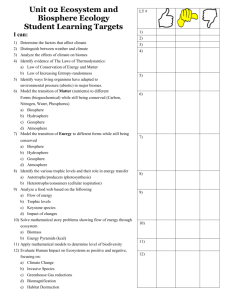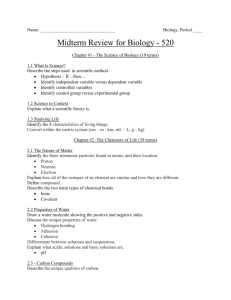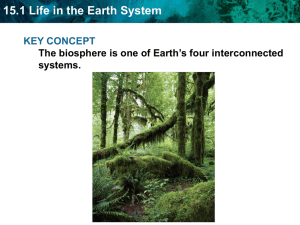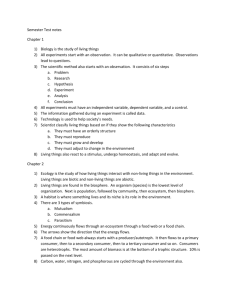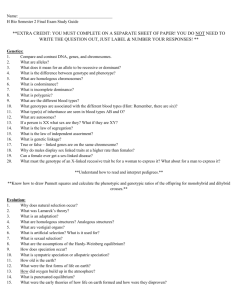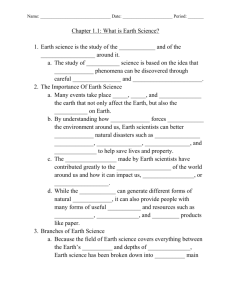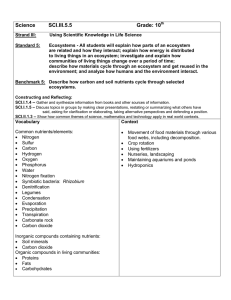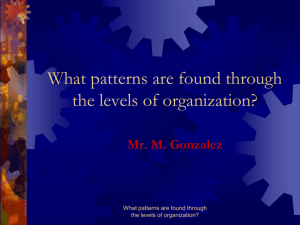study guide - Community Unit School District 308
advertisement
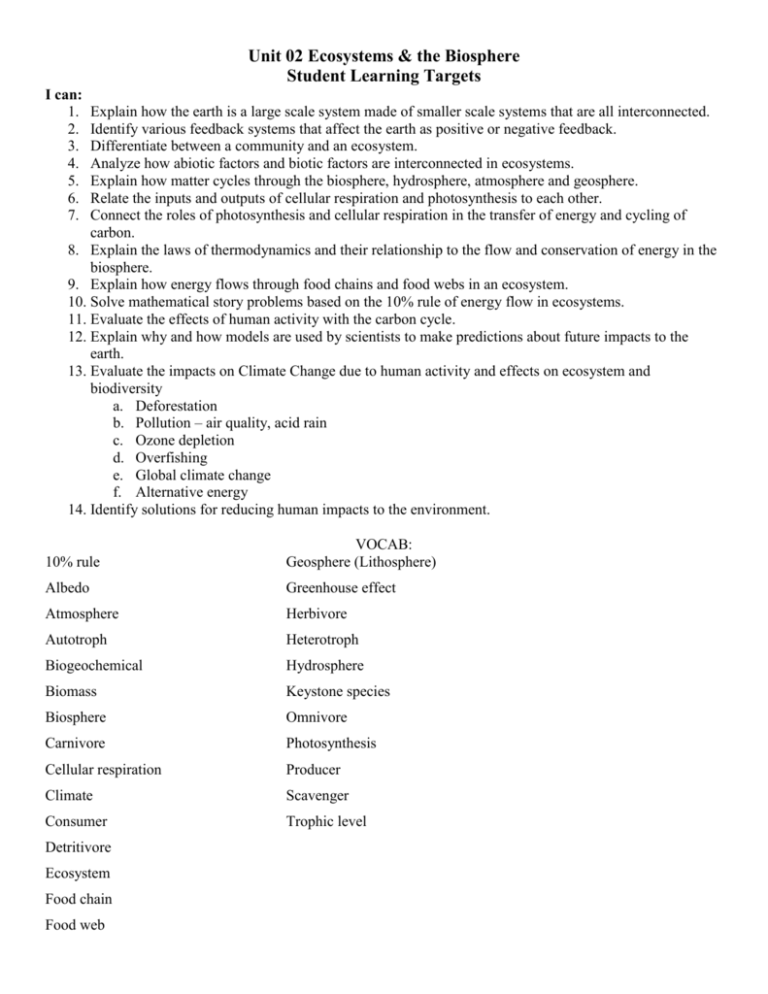
Unit 02 Ecosystems & the Biosphere Student Learning Targets I can: 1. 2. 3. 4. 5. 6. 7. Explain how the earth is a large scale system made of smaller scale systems that are all interconnected. Identify various feedback systems that affect the earth as positive or negative feedback. Differentiate between a community and an ecosystem. Analyze how abiotic factors and biotic factors are interconnected in ecosystems. Explain how matter cycles through the biosphere, hydrosphere, atmosphere and geosphere. Relate the inputs and outputs of cellular respiration and photosynthesis to each other. Connect the roles of photosynthesis and cellular respiration in the transfer of energy and cycling of carbon. 8. Explain the laws of thermodynamics and their relationship to the flow and conservation of energy in the biosphere. 9. Explain how energy flows through food chains and food webs in an ecosystem. 10. Solve mathematical story problems based on the 10% rule of energy flow in ecosystems. 11. Evaluate the effects of human activity with the carbon cycle. 12. Explain why and how models are used by scientists to make predictions about future impacts to the earth. 13. Evaluate the impacts on Climate Change due to human activity and effects on ecosystem and biodiversity a. Deforestation b. Pollution – air quality, acid rain c. Ozone depletion d. Overfishing e. Global climate change f. Alternative energy 14. Identify solutions for reducing human impacts to the environment. 10% rule VOCAB: Geosphere (Lithosphere) Albedo Greenhouse effect Atmosphere Herbivore Autotroph Heterotroph Biogeochemical Hydrosphere Biomass Keystone species Biosphere Omnivore Carnivore Photosynthesis Cellular respiration Producer Climate Scavenger Consumer Trophic level Detritivore Ecosystem Food chain Food web
